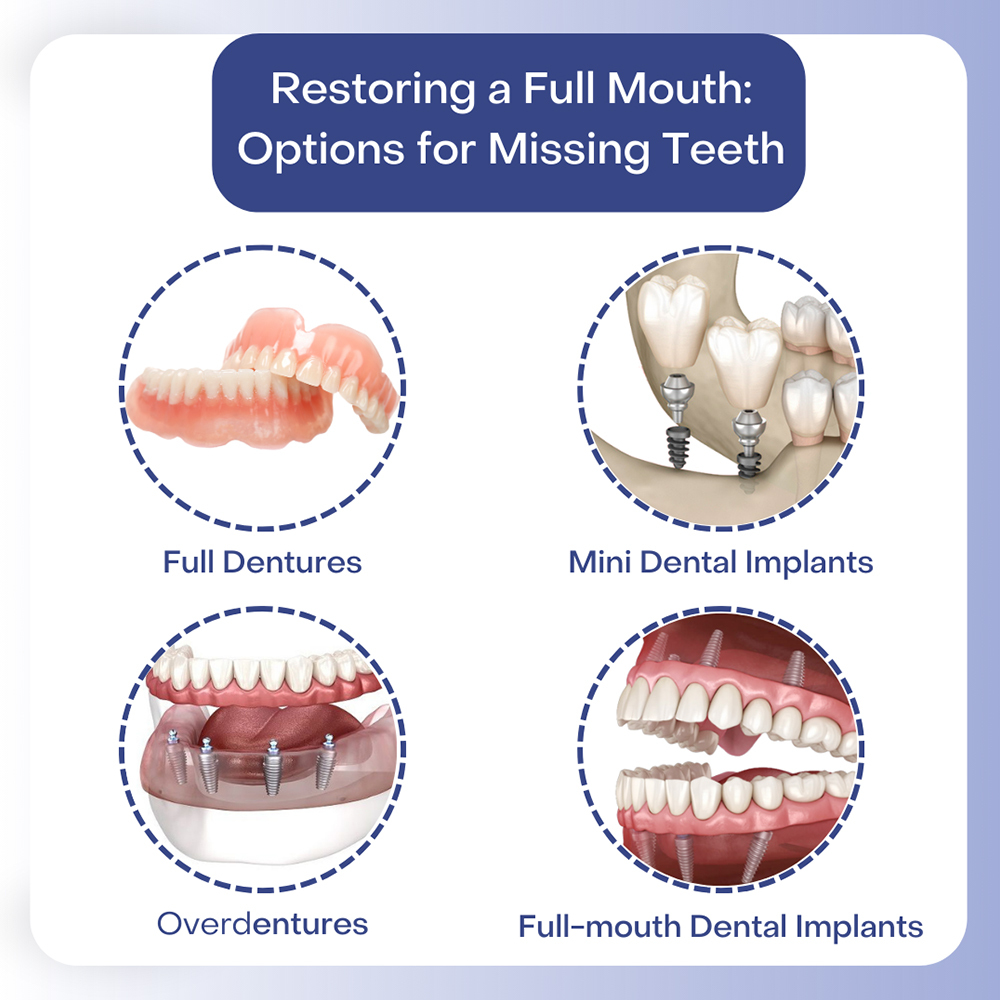The Ultimate Guide To Dental Sense
Table of ContentsGetting The Dental Sense To WorkThe Single Strategy To Use For Dental SenseThe Single Strategy To Use For Dental SenseAn Unbiased View of Dental Sense
are clinical tools surgically dental implanted into the jaw to recover an individual's capability to chew or their look. They offer support for fabricated (fake) teeth, such as crowns, bridges, or dentures. When a tooth is shed due to injury or condition, an individual can experience complications such as quick bone loss, malfunctioning speech, or changes to chewing patterns that cause pain.Oral implant systems contain a dental implant body and dental implant abutment and may also consist of a joint fixation screw. Dental implants. The oral implant body is surgically inserted in the jawbone instead of the tooth's origin. The oral implant abutment is normally affixed to the implant body by the joint addiction screw and extends with gums right into the mouth to sustain the affixed man-made teeth
Cigarette smoking may influence the recovery procedure and reduce the long-lasting success of the implant. The recovery process for the dental implant body might take a number of months or longer, throughout which time you commonly have a temporary abutment in location of the tooth. the oral implant procedure: Very carefully adhere to the dental health instructions provided to you by your oral copyright.
Not known Incorrect Statements About Dental Sense
Implant failure can cause the need for another surgery to repair or replace the dental implant system. Brings back the capability to chew Restores aesthetic appearance Aids keep the jawbone from shrinking as a result of bone loss Preserves the wellness of the surrounding bone and gum tissues Helps keep adjacent (nearby) teeth secure Boosts top quality of life Damage to surrounding all-natural teeth during dental implant positioning Injury to the surrounding tissues throughout surgical treatment, such as sinus opening Injury throughout surgical procedure (as an example, crack of bordering jawbone) Poor feature, such as feeling like the teeth do not attack with each other normally A sensation that the tooth hangs or turning in area arising from a joint screw loosening up Implant body failing (looseness of the implant body) due to systemic infection, which might be more probable in people with unchecked diabetics issues as a result of neighborhood infection in bone and gums sustaining the dental implant body because of postponed healing, which might be more probable in people who smoke Difficulty cleansing the gums around the dental implant, resulting in inadequate oral hygiene Unattended periodontal illness Post-surgical numbness as a result of nerve impingement or damage Constantly notify health treatment service providers and imaging technicians that you have oral implants before any kind of magnetic resonance imaging (MRI) or x-ray treatments.
FDA is not knowledgeable about any kind of damaging events reported for MRI or x-ray treatments with dental implants. Dental implants systems are normally made of materials that comply with international agreement requirements of the International Organization for Standardization (ISO) or ASTM International. These criteria have information of what makes a risk-free material.

A dental implant is a framework that changes a missing tooth. With screw-like tools, the cosmetic surgeon inserts a dental implant right into the jawbone, and it serves as an anchor for a fabricated tooth, called a crown. A device called a joint attaches the fabricated tooth to the oral implant. The crown is customized to fit the person's mouth and match the color of their teeth.
4 Easy Facts About Dental Sense Described
Some people are not eligible for oral implant surgery. It is for oral surgeons to run on individuals with: acute illnessuncontrollable metabolic diseasebone or soft tissue condition or infectionIf these problems are resolved, a person can have the surgical procedure. In, oral cosmetic surgeons refrain from operating people with: If people with any of the above undertake oral implant surgical procedure, there is a higher threat of the implant failing.

Oral dental implant surgical procedure is a tailored process. It's not the exact same for everyone. Yet the adhering to provides a general introduction of what you can expect your dental professional, oral surgeon, periodontist or prosthodontist to do: Position the implant surgically. Offer you time to recover. Connect the blog post and last crown, bridge or denture.
Next, your surgeon will very carefully place the dental implant into your jaw. Your surgeon will reposition your gum tissues and close the incision with stitches. If your dental implant is near the front of your mouth, your dentist will make a temporary tooth for you to put on until you heal. By doing this, you will not have a space in your smile while you recuperate.
6 Easy Facts About Dental Sense Described
Throughout the healing stage, your jawbone needs to fuse to the oral implant. This procedure can take anywhere from three to nine months.
Once your dental implant heals, your dental practitioner can attach index the abutment (little adapter blog post) and your last restoration (crown, bridge or denture). This typically takes about one hour to complete and might require a 2nd small surgery. You shouldn't really feel any pain throughout your oral implant procedure due to the fact that your provider will certainly use drug to numb your periodontals.
Comments on “Everything about Dental Sense”